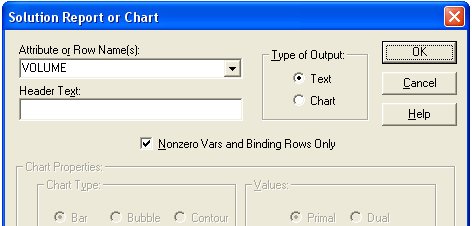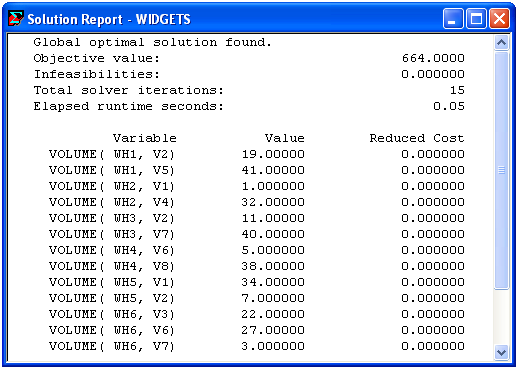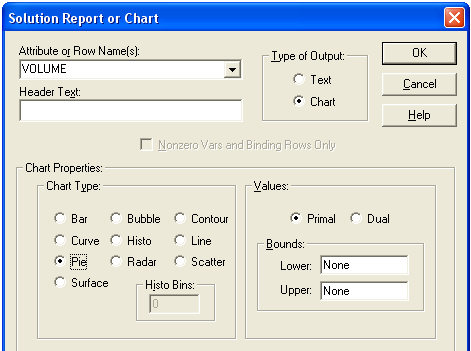Solving the Transportation Model
Now, let’s solve the model to determine the optimal shipping volume for each warehouse to vendor link. In LINGO for Windows, choose Solve from the LINGO menu or press the Solve button (![]() ). On other platforms, enter the GO command at the command-line prompt. LINGO will respond by solving the model and returning a somewhat lengthy solution report containing the values for all the variables, constraints, and data in the model. Most of this information is not of immediate interest. What we would really like to know is the amount of widgets being shipped from the warehouses to the vendors.
). On other platforms, enter the GO command at the command-line prompt. LINGO will respond by solving the model and returning a somewhat lengthy solution report containing the values for all the variables, constraints, and data in the model. Most of this information is not of immediate interest. What we would really like to know is the amount of widgets being shipped from the warehouses to the vendors.
| Note: | Anytime you find the amount of LINGO’s output overwhelming, you can choose Options… from the LINGO menu, select the Interface tab, and set the Output Level option to Terse. LINGO will then display only the solutions status, objective value and number of iterations in the solution window. In non-Windows versions of LINGO, enter the TERSE command before giving the GO command. |
| Note: | To obtain a report containing only the nonzero values for VOLUME, we select the Solution command from the LINGO menu. We are then presented with the following dialog box: |

Press down on the arrow button in the Attribute or Row Name field and select VOLUME from the list of names in the drop-down box. To suppress the printing of variables with zero value, click on the Nonzero Vars and Binding Rows Only checkbox. Once you have done this, the dialog box should resemble:

Now, click the OK button and you will be presented with the following report that contains the nonzero VOLUME variables:

If you are running LINGO on a platform other than Windows, you can generate the same report by issuing the NONZERO VOLUME command.
LINGO can also display various forms of charts depicting your solution. Suppose you would like to display a pie chart of VOLUME. You may do this by first clicking on the Chart button in the Type of Output box, which will enable the Chart Properties box, where you select a chart type of Pie:

Clicking OK will cause LINGO to open a new window with the requested pie chart:

